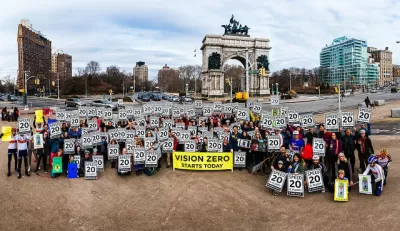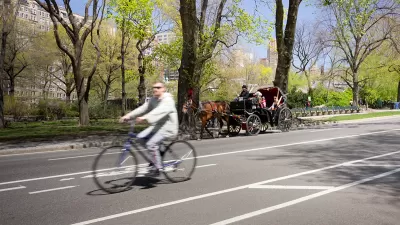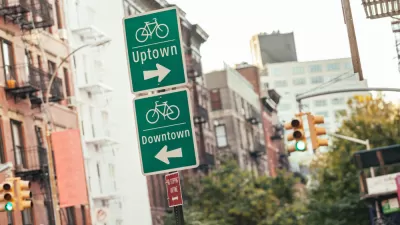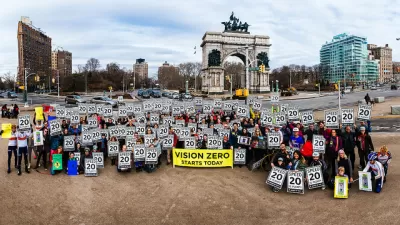Mayor Bill de Blasio in 2014 set a goal to eliminate traffic fatalities from New York City. Now, with de Blasio preparing to leave office, more people are dying on the city's streets than when he made that announcement.

New York City is facing the deadliest year on city streets in nearly a decade—and some victims and advocates are wondering what became of Mayor Bill de Blasio's promise at the beginning of his administration to eliminate traffic fatalities.
"When Mr. de Blasio took office nearly eight years ago, one of his most ambitious promises was to tame New York City’s deadly streets, where nearly 300 people had been killed in traffic deaths just the year before, writes Winnie Hu in an article for The New York Times.
"The city has not delivered on its pledge. As Mr. de Blasio gets ready to step down in January, the streets are more dangerous than they were when his tenure began," adds Hu.
" At least 189 people — including 87 pedestrians and 12 cyclists — have been killed by crashes on city streets through Sept. 14, up nearly 26 percent from the same period last year and the highest number of deaths in that period since 2013, according to city records."
The feature-length article tells the stories of some f those who lost their lives, and their loved ones who are left to pick up the pieces, as well as detailing some of the political challenges of implementing new enforcement techniques and technology.
The article notes the early successes of the city's approach to re-engineering streets while also more strictly enforcing traffic laws, "with a five-year decline in traffic deaths to 205 in 2018, the lowest level in more than a century."
While reckless driving during the pandemic is one factor in the rising number of deaths, so too is the increasing size of vehicles, according to the article.
FULL STORY: De Blasio Vowed to Make City Streets Safer. They’ve Turned More Deadly.

Alabama: Trump Terminates Settlements for Black Communities Harmed By Raw Sewage
Trump deemed the landmark civil rights agreement “illegal DEI and environmental justice policy.”

Planetizen Federal Action Tracker
A weekly monitor of how Trump’s orders and actions are impacting planners and planning in America.

Why Should We Subsidize Public Transportation?
Many public transit agencies face financial stress due to rising costs, declining fare revenue, and declining subsidies. Transit advocates must provide a strong business case for increasing public transit funding.

Understanding Road Diets
An explainer from Momentum highlights the advantages of reducing vehicle lanes in favor of more bike, transit, and pedestrian infrastructure.

New California Law Regulates Warehouse Pollution
A new law tightens building and emissions regulations for large distribution warehouses to mitigate air pollution and traffic in surrounding communities.

Phoenix Announces Opening Date for Light Rail Extension
The South Central extension will connect South Phoenix to downtown and other major hubs starting on June 7.
Urban Design for Planners 1: Software Tools
This six-course series explores essential urban design concepts using open source software and equips planners with the tools they need to participate fully in the urban design process.
Planning for Universal Design
Learn the tools for implementing Universal Design in planning regulations.
Caltrans
Smith Gee Studio
Institute for Housing and Urban Development Studies (IHS)
City of Grandview
Harvard GSD Executive Education
Toledo-Lucas County Plan Commissions
Salt Lake City
NYU Wagner Graduate School of Public Service





























